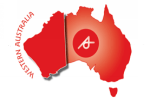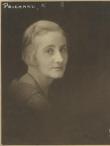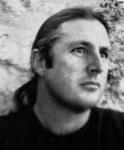AustLit
-
In 2008, the University of Western Australia began work on a specially focused dataset, The Goldfields Bards of Western Australia. It recorded the literary material published in the numerous newspapers that flourished in gold fields towns during the late nineteenth and early twentieth centuries. This was a time when the discovery of fabulously rich gold deposits in Western Australia's outback regions sparked a rush of people from diverse social and intellectual backgrounds from all over Australia and the world.
Western Australian Literature originated in the publication of Western Australian Literature: A Bibliography in 1981 and its revised 1990 edition, Western Australian Writing: A Bibliography. Its original compilers were Bruce Bennett, with Peter Cowan, John Hay and Susan Ashford.
Representing writers who are aligned with Western Australia by birth, residence or other eligible association, these were the first bibliographies to systematically record works by Western Australians and works relating to that state. The bibliographies were converted to electronic form in the late 1990s, and all records are now incorporated into AustLit.
The Goldfields Bards of Western Australia
The discovery of fabulously rich gold deposits in Western Australia's outback regions in the late nineteenth and early twentieth centuries sparked a rush of people of diverse social and intellectual backgrounds from all over Australia and the world. Between 1892 and 1909 no fewer than sixty newspapers came into being in booming goldfields towns such as Kalgoorlie, Coolgardie, Cue, Menzies, Sandstone and Southern Cross.
When a town emerged, a newspaper quickly followed to cater for the information and cultural needs of people braving extreme geographic isolation. World as well as local news was covered and even the smaller newspapers in towns such as Day Dawn and Leonora matched those of the larger centres in scope and quality. Forty-three of these sixty newspapers began publication before 1900. By the early 1920s, only nine remained in existence. Many of the newspapers that achieved relative longevity boasted talented editors such as Andree Hayward, John Webb, F. C. B. Vosper and Alfred Chandler (qq.v.). These were men who were closely in touch with latest developments in journalism in England and America, and they were united in a crusade for social reforms and political enlightenment. Hayward in particular had a strong literary background. Educated at Rugby and Oxford in England, he migrated to Western Australia in 1894 and believed that topical verse was an integral component of good journalism.
In their quest for entertaining material to sustain and boost circulation, the goldfields newspapers vigorously advertised for literary contributions from readers and paid handsomely for what was accepted for publication. They were especially interested in verse and prose written from personal experience and with local 'colour'. Having something to say was more important than knowing how to say it. If needed, the work would be knocked into shape by the editors. In nineteenth century parlance, this was referred to as 'Manly Writing' and 'Manly Wit', meaning working class writing and working class wisdom derived from the 'university of life'.
To encourage and develop the talents of local versifiers and storytellers, work by eastern Australian writers was often re-printed from sources such as Sydney's Bulletin and Smith's Weekly. It was also supported by criticism covering contemporary literary developments.
Little of the work by the Goldfields Bards was published in book form. For this reason, the material can only be accessed by scanning the microfilmed pages of the goldfields newspapers, an undertaking requiring substantial scholarly effort. AustLit has accepted this challenge, and we welcome you to the rewards of our research in this exciting subset.
AustLit acknowledges guidance in preparing these notes from Beverley Smith's Master of Arts thesis for the History Department of the University of Western Australia, 'Early Western Australian Literature: A Guide to Colonial and Goldfields Life' (1961).
You might be interested in...






